Dell XPS 13 Review
by Brett Howse on February 19, 2015 9:00 AM EST- Posted in
- Laptops
- Dell
- Ultrabook
- Broadwell-U
- XPS 13
Gaming Performance
Normally on an Ultrabook we would not dedicate an entire page to gaming performance, because the integrated GPUs do not perform very well on our gaming tests. However, with this being our first example of Broadwell-U, it is a good time to revisit this and see how the new graphics capabilities of Broadwell compare to the Haswell processors.
With the Core i5-5200U in both of the XPS 13s that we received, we have 24 execution units, compared to only 20 on Haswell-U. In addition, the 14nm process should help with throttling. The FHD model (1920x1080) arrived with a two 2GB memory modules and the QHD+ version came with 2 x 4GB.
First, let's look at the synthetic benchmarks, starting with 3DMark and then moving on to GFXBench.
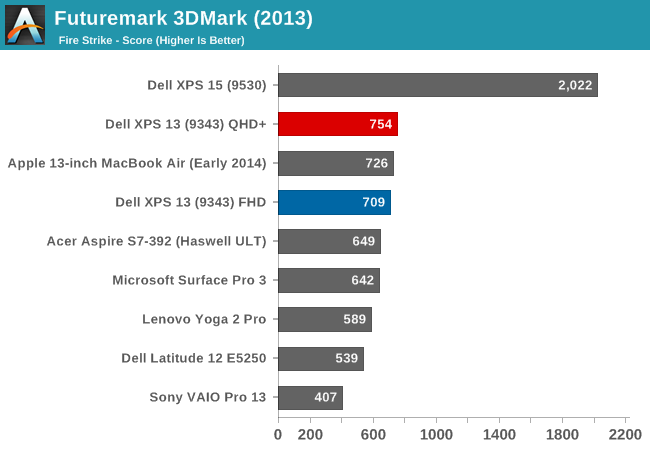
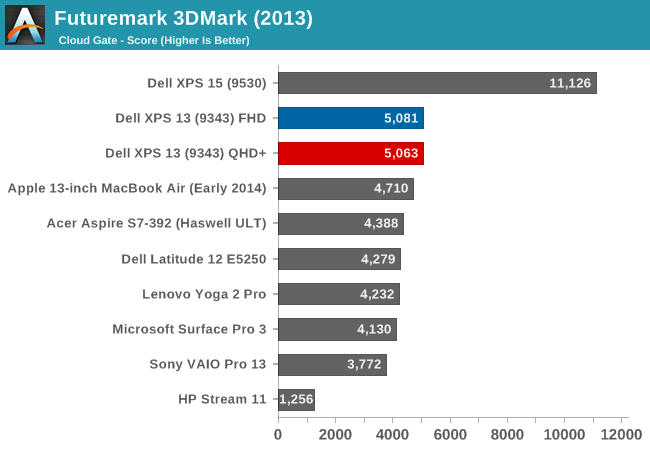
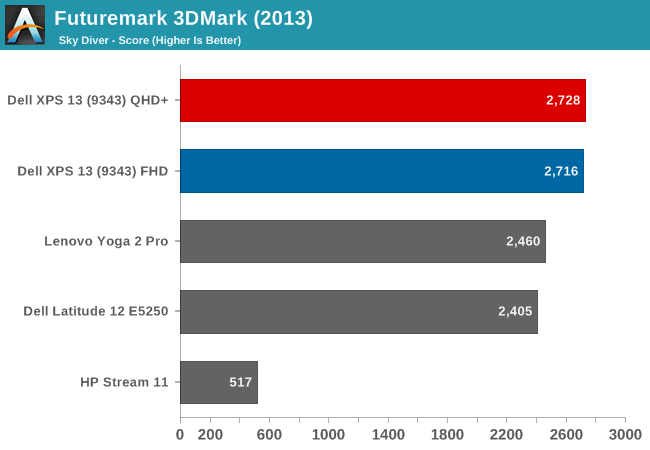

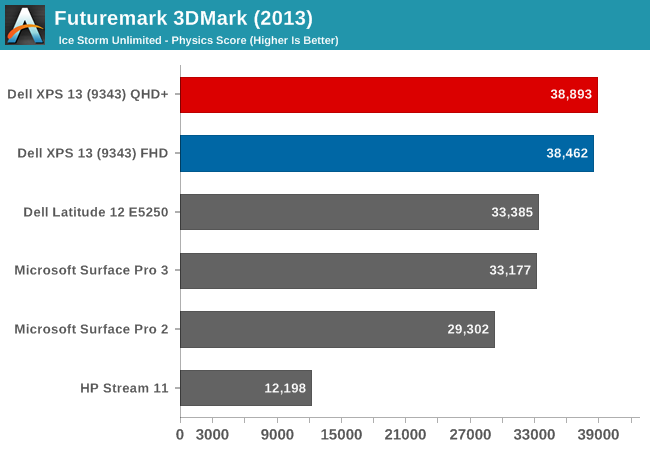
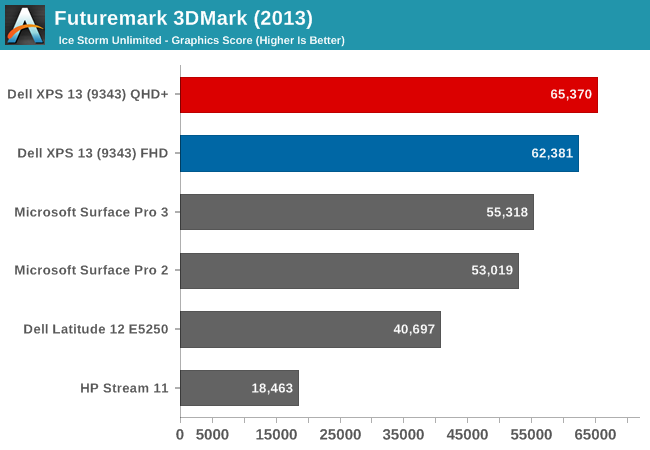
The 3DMark results begin to show the increased GPU performance of the Gen8 graphics. Broadwell-U outperforms all of the Haswell-U parts on all of the tests, and the QHD+ model gave a fraction more performance as well in a few tests.

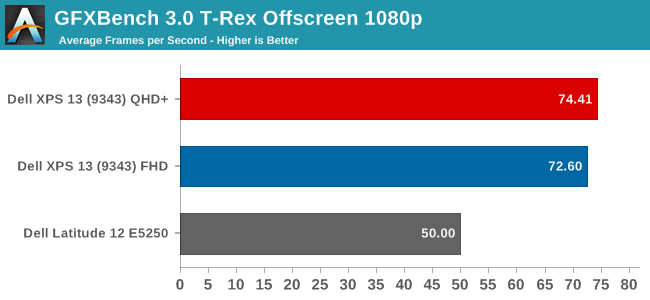

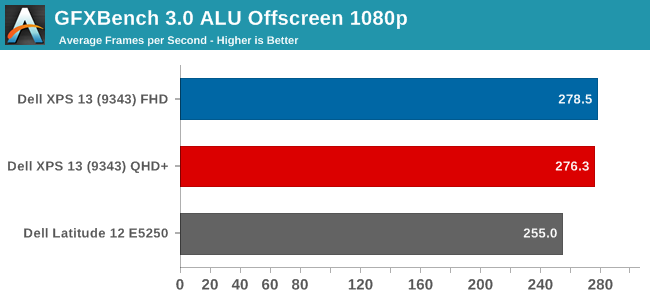
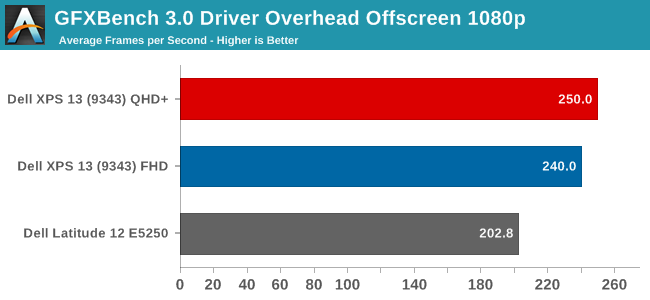
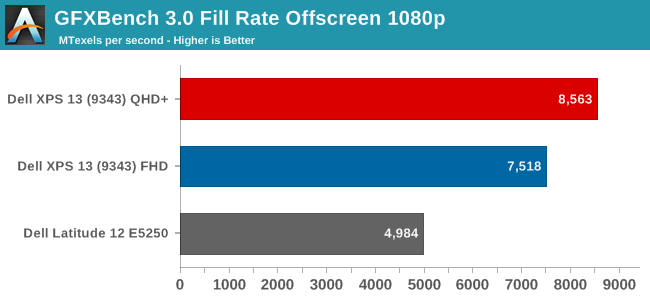
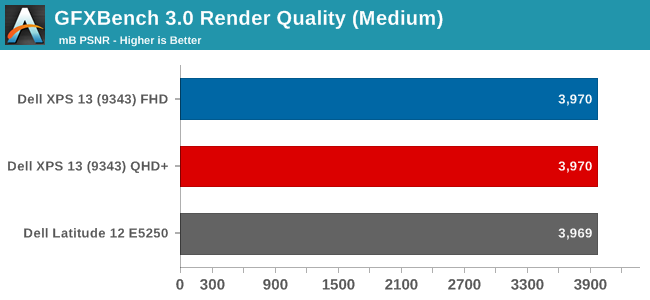
The initial results for the new GPU look pretty good, with the new GPU soundly beating the Haswell-U parts. The HP Stream 11, with just 4 EUs, trails quite far behind. GFXBench is one of our newer benchmark choices for Windows 8, and we will add more data as we get a few more devices to test.
Next, let's look at our gaming benchmarks. Due to the low performance of the integrated GPUs, I just ran our gaming tests at the Value (1366x768 ~Medium) settings.

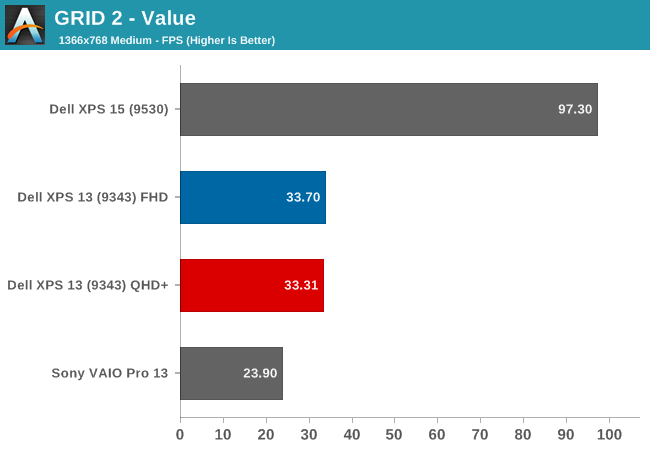

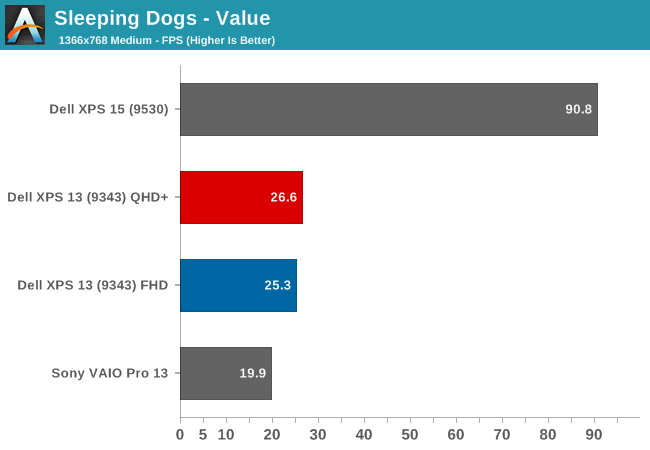
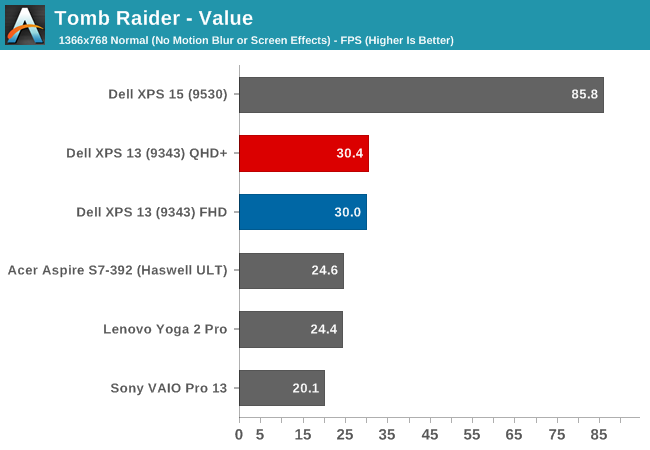
Here we can see once again that the new GPU is certainly stronger, but it is still not quite enough to make any of these games very playable on our Value settings. The Dell XPS 15, with its discrete GPU, carries a huge lead over the integrated GPU offerings. Still, the new Gen8 Graphics with more execution units per processor, as well as a change to the architecture of each execution unit, has made a healthy improvement. The new GPU has only eight EUs per sub-slice now, as compared to ten in Haswell-U, which help in many workloads. Ian has a nice writeup on the changes.
However, our gaming benchmarks are not tested at the lowest possible settings. All of the benchmarks start at 1366x768 with medium settings, so let's drop down another notch.
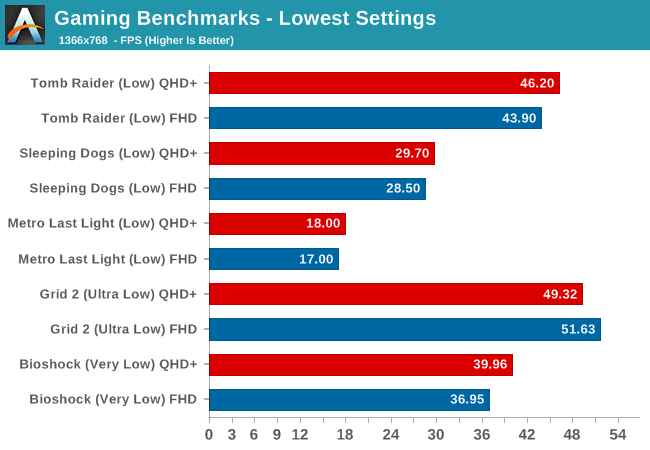
By setting the games to their lowest settings, some of them are now playable. We are still a long ways off of the performance of a discrete GPU, but slowly integrated graphics are improving.
Finally, we have a new gaming benchmark to add to our repertoire. Anand first used the DOTA 2 bench for the Surface Pro 3 review and it will be our go-to benchmark for devices like this without a discrete GPU. Our Value setting will be 1366x768 with all options off, low quality shadows, and medium textures. Midrange will be 1600x900 with all options enabled, medium shadows, and medium textures, and Enthusiast will be 1920x1080 with all options maxed out.
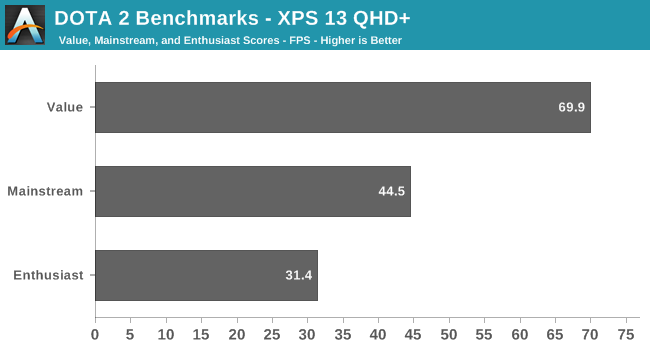
We do not have any other comparison points at the moment, but it is very clear that a game like DOTA 2 is very playable on a device with an integrated GPU. Frame rates, even with good settings, are very reasonable.
So Broadwell has raised the stakes again, but the end result is Intel's Integrated GPU is still not going to let you play AAA titles with good frame rates. Hopefully we can get some good comparisons between Broadwell-U and the AMD APUs in the near future. It will also be interesting to see what happens on the higher wattage Broadwell parts, some of which will contain significantly more EUs.










201 Comments
View All Comments
icrf - Thursday, February 19, 2015 - link
How much power does touch circuitry/software consume? I remember first generation touch enabled laptops did rather poorly compared to their non-touch versions.JarredWalton - Thursday, February 19, 2015 - link
These days touch is pretty negligible as I understand it -- maybe 50mW? Obviously tablets and smartphones are able to provide touch and still get great battery life. They have smaller displays but also much smaller batteries, so it should be a wash.Brett Howse - Thursday, February 19, 2015 - link
It is not a light based auto-brightness, or I could have done that. It's Content Adaptive.extide - Thursday, February 19, 2015 - link
The brightness stayed at 200 nits for the whole test, which is where they test at, so whats the big issue?maecenas - Thursday, February 19, 2015 - link
I wonder if it would be feasible to have a retractable webcam at the top of the laptop that could retract when not in use. That would allow for the smaller bezel and would be good from a privacy perspective too.Uplink10 - Thursday, February 19, 2015 - link
Can someone please tell me in which market this 13" laptops belong. Screen is too small for any serious work or watching movies, it is only usable for administration tasks and portable server because of its size and thickness.Would love to see a review of Bay Trail laptops in range to 300 USD, they are cheap and offer a lot for their price.
Gunbuster - Thursday, February 19, 2015 - link
Um professionals that sometimes travel. Those who do "serious work" have an external monitor at their primary work space. I mean you can get a decent 24" LCD for $150 these days...ZeDestructor - Thursday, February 19, 2015 - link
It's perfect for lightweight tasks when travelling: SSH, web-browsing, IM, a bit of code, reading stuff. If I need actual power, I'll drag along something like a Precision around instead.John_dune - Thursday, February 19, 2015 - link
As a computer professional who doesn't have a desk at his job, but travels between 8 different worksites, something like this would be amazing to take with me, as in 80% of my computer time at work is dedicated to research, emails, and general day to day trudgery. I've been using 13 inch laptops for almost 7 years now, and have had no major issues with it (the only issue I have is if I ever try to do photo-editing, and at that point a 720p panel just doesn't have the pixels to display everything), even at 720p resolution.Zan Lynx - Saturday, February 21, 2015 - link
I have a XPS 13 from 2013 and I love it. I use a 28" external at work, but when I'm sitting on the couch or traveling the smaller size machine works great.